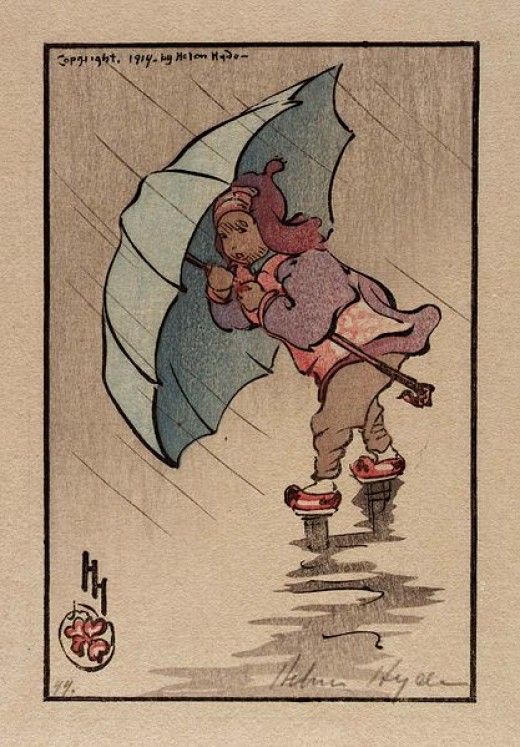 Overcast and sprinkling rain this early Thursday on California’s north coast, a respite from most-likely the strongest storm of the ‘season’ last night.
Overcast and sprinkling rain this early Thursday on California’s north coast, a respite from most-likely the strongest storm of the ‘season’ last night.
In seemingly classic-weather style yesterday afternoon, heavy, gusty winds forewarned of the coming rain front — then rain pushed by the blowing-crazy air pelted down/sideways/every-which-way through the evening and night. We received more than an inch pretty quickly, and the pounding wet continued into this morning.
Quiet right now, though, as the NWS advises ‘Hail Showers‘ could maybe pepper the shoreline area today.
Although the fading El Niño was considered a ‘Godzilla’ this year, history has no validity. Jan Null, a meteorologist with Golden Gate Weather Services: ‘“…the entire planet is changing, so whether climatology from 65 years ago should be valid now, you may need to put an asterisk next to it.”‘
(Illustration: ‘The Blue Umbrella 1914,’ by Helen Hyde, found here).
Indeed as the El Niño shuffles off, the land will be drier still — from Bloomberg this morning:
A La Nina watch was issued Thursday as the warming across the equatorial Pacific’s surface began to fade and cold water started building in its depths, the U.S. Climate Prediction Center said.
There is a 60 percent chance the La Nina could occur from July to September and a 70 percent chance there will be one in the winter.
The Australian Bureau of Meteorology issued a watch on Tuesday.
“These are definitely not a guarantee but they are high enough that we decided to go ahead and issue the watch so folks are aware,” said Michelle L’Heureux, a forecaster with the climate center in College Park, Maryland.
“The fact is, we are already starting to see some real strong changes in the ocean.”
La Ninas occur when the surface of the Pacific cools, bringing on an atmospheric reaction that can upset global weather patterns and move commodity and energy markets.
In addition to helping cause colder winters across the northern U.S., the phenomenon also has meant heavier monsoons in India as well as more rain across parts of Indonesia, Australia and Brazil.
…
L’Heureux said the layer of warm water that marked this year’s El Nino has begun to fall apart.
“It is really becoming quite thin and degrading rapidly,” she said.
“The subsurface temperatures are really cooling off.”
The latest El Nino contributed to a record warm winter in the 48 contiguous U.S. states, a drought across many Pacific islands and fires in Indonesia.
While the El Nino that is fading was one of the strongest ever, that doesn’t mean there will be a long wait for the Pacific to cool, L’Heureux said.
“The thing with strong El Ninos is if they transition, they transition pretty quickly,” L’Heureux said.
“If a La Nina were to form, it would be pretty quick.”
No rest for the wicked…
And as the climate changes, shit goes beyond weather — appears as if human’s need for essential omega-3 fatty acids in algae, such as EPA and DHA, vital to the health of all vertebrates, may be in danger due to a warming world.
From today’s MedicalXPress:
Led by Stefanie Hixson, a research associate in the Department of Chemistry and Biology at Ryerson University, the research represents the first-ever large-scale study to demonstrate that increasing water temperature is expected to have a negative effect on eicosapentaenoic acid (EPA) and docosahexaenoic acid (DHA) and production, and concludes with the prediction that a 2.5°C increase in water temperature will reduce EPA by 8.2 per cent and DHA by 27.8 per cent globally.
“We knew that algae use certain fatty acids to adapt to changes in water temperature, so we looked at this effect on a global scale,” said Hixson.
“Our results demonstrate that by the year 2100 EPA and DHA production — and therefore its availability for human consumption — will be very significantly impacted if current trends in global warming continue unabated.
“This is a serious problem, as the current supply of these nutrients has been shown by other researchers to be barely sufficient to meet the nutritional demand of the human population.”
So don’t sweat the hail storm.